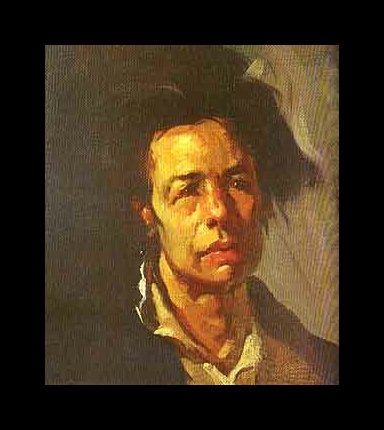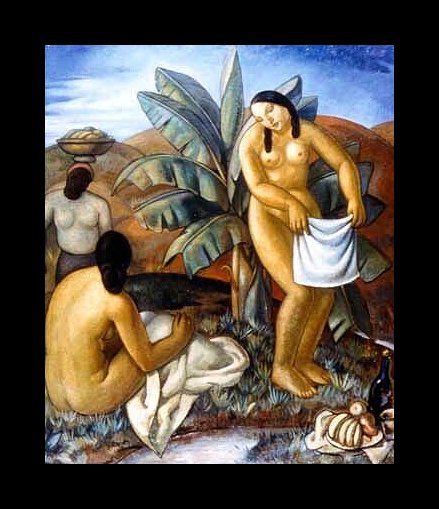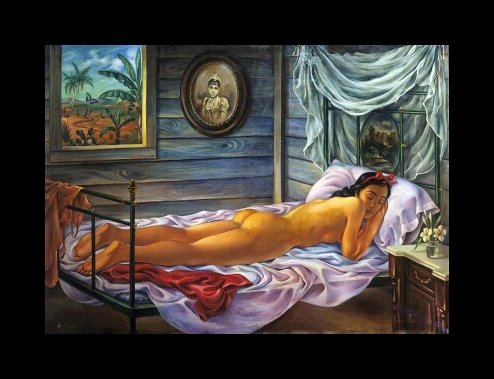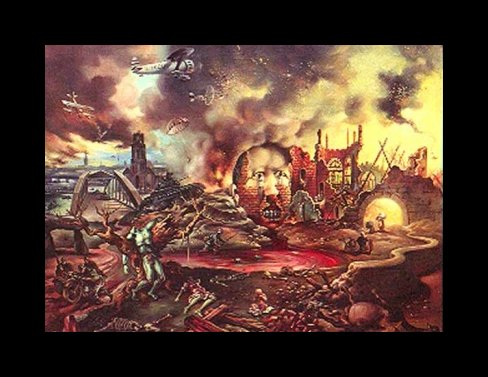Antonio Gattorno (1904-1980)
We Perform Antonio Gattorno art authentication. Antonio Gattorno appraisal. Antonio Gattorno certificates of authenticity (COA). Antonio Gattorno analysis, research, scientific tests , full art authentications. We will help you sell your Antonio Gattorno or we will sell it for you.
We Perform One of the most mysterious figures ever in Cuban art is Antonio Gattorno. His work is nothing short of Surrealist genius, yet he never quite reached the same level of fame as fellow student and lifelong nemesis Salvador Dali. Much of Gattorno’s later work is similar to Dali’s in terms of scenes, imagery and technique, but Gattorno still held his own against his fellow Cuban artists. He has been considered a pioneer in the modern art movement in Cuba as well as a leader among the Vanguards. Arguably, he is the most underrated artist of the 20th century, and is relatively unknown outside of the Cuban art world.
Gattorno began his studies at the San Alejandro School at the very young age of 12. Here he studied under the famous painter Romanach and his earliest work reflects his teachings. He painted this picture of his wet nurse “Dolores” (1919) when he was only 15, and this shows his masterful grasp on portraiture at such a young age.

Dolores
After he finished his studies at San Alejandro, he traveled to Europe on a scholarship. He was still a boy when he went to study the European masters. He returned to Cuba in 1927 and began to paint Cuban themes, but in a highly European style. These paintings are among the rarest in his collection, yet are the most highly known and prized and feature children fishing, fruits, florals, country scenes and portraits. He was very heavily involved in the early Creole movement and many of his paintings feature island imagery and Creole themes. He was highly influence by Gaugin and during this return from Cuba he concentrated on his plastic technique. One of his better known Cuban themed works is “El Rio” (1927).

El Rio
Upon his return from Spain, Gattorno was still relatively unknown. American writer Ernest Hemingway, who lived much of his life in Cuba, took a liking to Gattorno and his work. He gave him shining reviews and in many ways helped to launch his career. It is even said that Hemingway was like a father figure to him, and they formed a life long friendship. Upon Hemingway’s advice, Gattorno packed up and moved to New York City in 1930 to help further his career.
Once in New York, Gattorno began to paint in a style that his critics called Primitive Realism. He would often paint portraits of his friends and relatives in a realistic, yet childlike way, usually in front of an open window or space where he could paint a lush background. “La Siesta,” (1940) one of his most accomplished pieces, was created during this time. “La Siesta” is a prime example of his talents as a Vanguard painter, and has been called “The Mona Lisa of Cuban art.”

La Siesta
La Siesta was also a transitional piece for Gattorno. Note the curtains above the bed. These curtains are painted in a flowy, dreamy Surrealist style which helped to segue Gattorno into his next phase of painting. There is also a heightened sense of detail in the wood grain on the wall and the folds in the sheets on the bed.
If one would want to question why Gattorno and Dali were lifelong arch enemies, they would only have to look at Gattorno’s Surrealist painting “Hitler’s Portrait” (1942).

Hitler’s Portrait
Salvador Dali was known for his optical illusion painting using brick walls, statues or fruit to form faces or images of people. Gattorno used this same method in “Hitler’s Portrait.” At a glance, anyone unfamiliar with Gattorno may easily mistake this work as being a Dali. Their Surrealist styles were extremely similar, which is no surprise considering they studied together in Spain as young men.
From the 1940’s on, Gattorno’s oeuvre consisted mainly of Surrealist compositions. Sadly, these are his least known works. From mythical creatures to dreamlike scenes, his work was both beautiful and bizarre. Gattorno would often do paintings of deconstructed statues, much in the same way Dali would do. During this period, he did not express his Cuban roots in his Surrealistic painting nearly as often. However, from time to time he would paint a surreal landscape reminiscent of home.
Despite his success as a Surrealist painter, he was often called an ex-patriot for living abroad for the majority of his life. He never fully abandoned his Cuban heritage and Vanguard roots in his paintings however, he was often accused of doing that as well. His studies in Europe and residence in New York make it very likely that some of his work is still out there, waiting to be authenticated. His signature, also like Dali’s, was highly recognizable and stylized in a geometric fashion.
Upon his death it is said that most of Gattorno’s work was still owned within his family’s private collection, although after his death it is said that his widow sold or gave away most of his work. This leaves a remarkable chance for someone to own a piece by this great unknown master.
Today, much of his known work is housed in museums in Cuba.
We research, appraise, authenticate and issue certificates of authenticity for works by Antonio Gattorno.
Reviews
1,217 global ratings
5 Star
4 Star
3 Star
2 Star
1 Star
Your evaluation is very important to us. Thank you.
